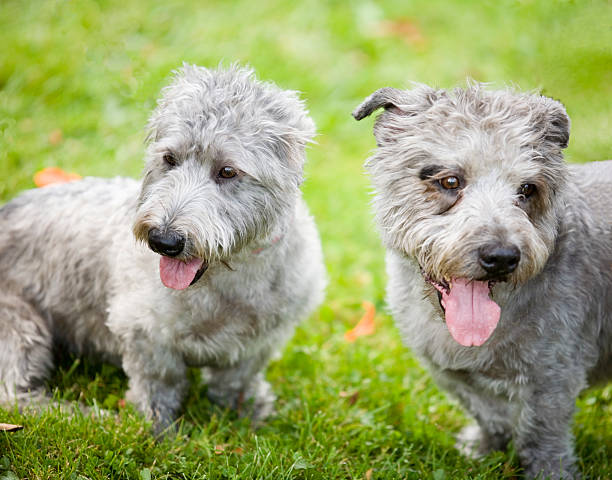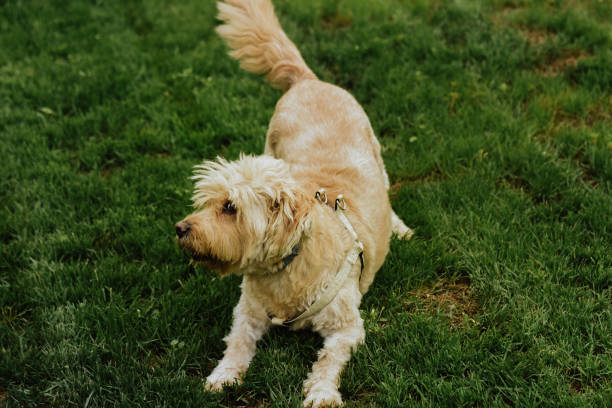Glen of Imaal Terrier

Breed History:
The Glen of Imaal Terrier is a rare and sturdy terrier breed that originated in the Glen of Imaal, a remote valley in County Wicklow, Ireland. Developed in the 17th century, this breed was used as a versatile farm dog, tasked with hunting vermin like badgers and rats, and even turning meat spits, a role that earned them the nickname “turnspit dog.”
Unlike many flashy terriers bred for show, the Glen was bred for function and toughness, prized by farmers for their strength, silence during the hunt, and ability to work underground. Officially recognised by the Irish Kennel Club in the 1930s and the AKC in 2004, it remains one of the rarer terrier breeds today.
|
Gender |
Height |
Weight |
|
Male |
32-35 cm |
15-18 kg |
|
Female |
28-32 cm |
13-16 kg |
Size – Small-Medium
Life Expectancy: 12–15 years

Breed Appearance:
The Glen of Imaal Terrier is a low-set, powerful dog with a distinctly long body and short legs, giving it a unique silhouette among terriers. Its harsh, medium-length coat is weather-resistant and typically comes in:
-
Wheaten (light to golden)
-
Blue
-
Brindle
They have a broad head, strong jaws, and rose or half-prick ears, contributing to their alert but gentle expression. The front legs are slightly bowed, giving them digging strength, and the tail is traditionally docked in some countries, though natural tails are increasingly accepted.
Breed Type – Earthdog/Companion:
Originally bred to hunt vermin and perform farm work, the Glen is an earthdog by nature, meaning it thrives on chasing, digging, and solving problems. Despite its working roots, it is also a devoted, calm, and affectionate companion, known for being quieter and more even-tempered than many other terriers.
It bonds strongly with its family and is particularly good with children, though it retains strong prey instincts toward small animals.

Training:
Glens are intelligent but independent, typical of terriers. They respond well to positive reinforcement but may resist harsh methods or repetitive tasks. Consistency, patience, and short, fun training sessions yield the best results.
Early socialization is important to prevent territorial behaviors. They can excel in earthdog trials, obedience, and rally, but training must stay engaging and respectful of their independent streak.
Health & Care:
The Glen of Imaal Terrier is a robust and generally healthy breed, but like all purebreds, they can be prone to specific conditions:
-
Hip dysplasia (though less common due to low height)
-
Progressive Retinal Atrophy (PRA)
-
Allergies and skin conditions
-
Obesity, if overfed or under-exercised
Responsible breeding and regular veterinary care are crucial. Genetic testing is available for PRA, and many breeders screen for joint issues.

Living Conditions:
Though compact, Glens are not apartment lapdogs. They need moderate daily exercise and mental stimulation. They adapt well to urban or rural homes, provided they are not left bored or under-stimulated.
They do best with fenced yards or secure outdoor spaces where they can dig and explore safely. They shouldn’t be trusted off-leash in open areas, as their prey drive is strong.
Exercise:
This breed needs 30–60 minutes of daily activity, which can include:
-
Walks and sniffing games
-
Tug-of-war and interactive toys
-
Backyard digging in a designated area
Though not hyperactive, they do require engagement to avoid boredom-related behaviors. They’re content with moderate activity but enjoy opportunities to "work" or problem-solve.
Grooming:
Glen of Imaal Terriers have a double coat with a harsh outer layer and soft undercoat. Grooming includes:
-
Brushing 1–2 times a week
-
Hand-stripping 2–3 times a year (for show dogs or texture maintenance)
-
Occasional bathing, nail trimming, ear cleaning, and dental care
They shed moderately and require regular coat maintenance to prevent matting or overgrowth.

Advantages:
-
Calm, affectionate, and loyal temperament
-
Great with children and good family companion
-
Low-maintenance energy level compared to other terriers
-
Unusually quiet and non-yappy for a terrier
-
Rare and distinctive breed with rich Irish heritage
-
Compact size but tough and sturdy
Disadvantages:
-
Can be stubborn or independent in training
-
Strong prey drive—may chase cats or small pets
-
Needs regular grooming and occasional coat stripping
-
May dig or chew if bored or under-stimulated
-
Not ideal for off-leash activities due to hunting instincts
-
Limited availability; may be hard to find from breeders

